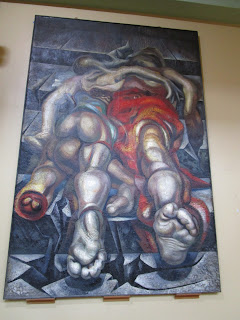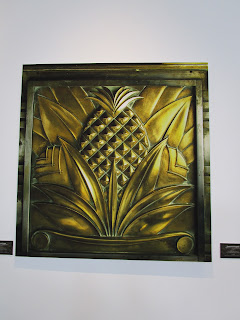 |
| Inside the Palacio de Belles Artes. With Diego Rivera murals. |
Mexico City, to its credit, is lousy with the murals of Diego Rivera. I'm an extreme amateur in the field of art history, but I don't believe there's a single artist more completely woven into the artistic fabric of a major city as Diego Rivera and Mexico City. And don't say Mozart and Vienna! I'm talking the visual arts here. Botero and Medellin is probably the only other candidate that comes to mind, but feel free to correct me as it is very likely I don't know what I'm talking about.
And one of the best places in Mexico City to see Diego Rivera murals is the Palacio de Bellas Artes.
Again, what's so Beethoven about that Beethoven statue?
It's right beside the Palacio de Bellas Artes, which is why I brought it up. And speaking of the Palacio de Bellas Artes, the price of admission on Sundays is free. Gratis. My favorite price! The downside. It is packed elbow to elbow.
I liked it. Placing the pieta in a desert really adds to the sense of isolation.
Here is another mural:
This is one I struggled to get the right view:
This is titled "El tormento de Cuauhtémoc." The torture of Cuauhtémoc.
This, however, is real Diego Rivera.
"Carnaval de la vida mexicana." Carnival of Mexican Life. From 1936. It's a tetraptych! This is the fourth panel:
A view of the interior of the dome:
And here is another view of "El tormento de Cuauhtémoc," this time looking down from the floor above to minimize the problems of (a) the concrete columns and (b) not being able to back up enough on the narrow walkways to get the whole Siqueiros mural in a single undistorted frame.
Taking in all of the floors of the interior:
There were other galleries inside, such as an impressionist gallery. But no major works or major artists save for the murals on the interior walls. A great day at the museum. And an even better price of admission.
























No comments:
Post a Comment